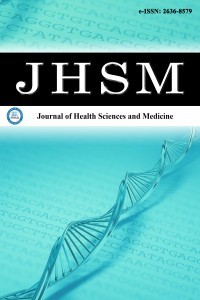1.
World Health Organization. Coronavirus disease 2019 (COVID-19): Situation Report, 51. 2020. Available at: https://apps.who.- int/iris/handle/10665/331475. Accessed July 15, 2020.
2.
Giordano NJ, Jansson PS, Young MN, Hagan KA, Kabrhel C. Epidemiology, pathophysiology, stratification, and natural history of pulmonary embolism. <em>Tech Vasc Interv Radiol</em>. 2017; 20(3):135-140.
3.
Katneni UK, Alexaki A, Hunt RC, et al. Coagulopathy and thrombosis as a result of severe COVID-19 infection: a microvascular focus. <em>Thromb Haemost</em>. 2020;120(12):1668-1679.
4.
Niculae CM, Hristea A, Moroti R. Mechanisms of COVID-19 associated pulmonary thrombosis: a narrative review. <em>Biomedicines</em>. 2023;11(3):929.
5.
Nakashima MO, Rogers HJ. Hypercoagulable states: an algorithmic approach to laboratory testing and update on monitoring of direct oral anticoagulants. <em>Blood Res</em>. 2014;49(2): 85-94.
6.
Chung I, Lip GY. Virchow’s triad revisited: blood constituents. <em>Pathophysiol Haemost Thromb</em>. 2003;33(5-6):449-454.
7.
Sayinalp N, Haznedaroğlu IC, Aksu S, et al. The predictability of factor V Leiden [FV:Q(506)] gene mutation via clotting-based diagnosis of activated protein C resistance. <em>Clin Appl Thromb Hemost</em>. 2004;10(3):265-270.
8.
Jadaon MM. Epidemiology of prothrombin G20210A mutation in the mediterranean region. <em>Mediterr J Hematol Infect Dis</em>. 2011; 3(1):e2011054.
9.
Katsoularis I, Fonseca-Rodríguez O, Farrington P, et al. Risks of deep vein thrombosis, pulmonary embolism, and bleeding after covid-19: nationwide self-controlled cases series and matched cohort study. <em>BMJ</em>. 2022;377:e069590.
10.
Di Minno A, Ambrosino P, Calcaterra I, Di Minno MND. COVID-19 and venous thromboembolism: a meta-analysis of literature studies. <em>Semin Thromb Hemost</em>. 2020;46(7):763-771.
11.
Mo P, Xing Y, Xiao Y, et al. Clinical characteristics of refractory Coronavirus disease 2019 in Wuhan, China. <em>Clin Infect Dis</em>. 2021;73(11):e4208-e4213.
12.
Wu C, Chen X, Cai Y, et al. Risk factors associated with acute respiratory distress syndrome and death in patients with Coronavirus disease 2019 pneumonia in Wuhan, China. <em>JAMA Intern Med.</em> 2020;180(7):1031.
13.
Chen G, Wu D, Guo W, et al. Clinical and immunological features of severe and moderate coronavirus disease 2019. <em>J Clin Invest.</em> 2020;130(05):2620-2629.
14.
Huang C, Wang Y, Li X, et al. Clinical features of patients infected with 2019 novel coronavirus in Wuhan, China. <em>Lancet.</em> 2020;395(10223):497-506.
15.
Levi M, Thachil J, Iba T, Levy JH. Coagulation abnormalities and thrombosis in patients with COVID-19. <em>Lancet Haematol.</em> 2020;7(06):e438-e440.
16.
Loo J, Spittle DA, Newnham M. COVID-19, immunothrombosis and venous thromboembolism: biological mechanisms. <em>Thorax.</em> 2021;76:412-420.
17.
Han H, Yang L, Liu R, et al. Prominent changes in blood coagulation of patients with SARS-CoV-2 infection. <em>Clin Chem Lab Med.</em> 2020;58:1116-1120.
18.
Aydin S, Ugur K, Yalcin H, et al. Overview of COVID-19’s relationship with thrombophilia proteins. <em>Turk J Biochemist.</em> 2021;46(6):609-622. doi:10.1515/tjb-2021-0183
19.
Frydman GH, Boyer EW, Nazarian RM, Van Cott EM, Piazza G. Coagulation status and venous thromboembolism risk in African Americans: a potential risk factor in COVID-19. <em>Clin Appl Thromb Hemost.</em> 2020;26:1076029620943671. doi:10.1177/ 1076029620943671
20.
Stefely, JA, Christensen, BB, Gogakos, T, et al. Marked factor V activity elevation in severe COVID-19 is associated with venous thromboembolism. <em>Am J Hematol.</em> 2020;95:1522-1530. doi:10. 1002/ajh.25979
21.
Xie J, Prats-Uribe A, Feng Q, et al. Clinical and genetic risk factors for acute incident venous thromboembolism in ambulatory patients with COVID-19. <em>JAMA Intern Med.</em> 2022;182(10):1063-1070. doi:10.1001/jamainternmed.2022.3858
22.
Tse J, Gongolli J, Prahlow JA. Hereditary thrombophilia as a possible risk factor for severe disease in COVID-19: a case series. <em>Forensic Sci Med Pathol.</em> 2024. doi:10.1007/s12024-024-00879-4

